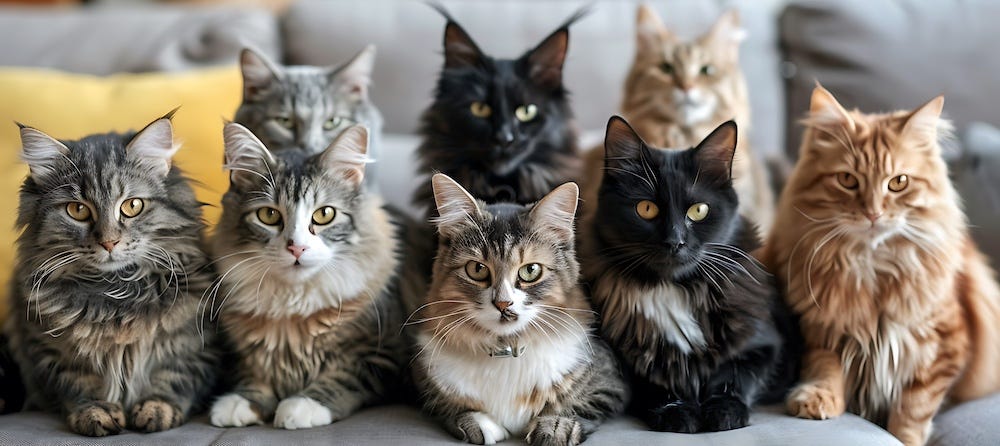Cats have a very different eye structure than humans, which in turn makes their vision different than that of humans. For various reasons, there was an evolutionary advantage for humans to develop our type of eye structure and vision abilities, and the same goes for cats. What we're good at seeing is not necessarily what they're good at seeing and vice versa. One of the most commonly discussed differences is color. Can cats see color? To help understand the answer, we called on Petful to shed some light on the issue.
It’s The Cones, Not The Rods
The composition of photoreceptors in a cat’s retina differs considerably from that in a human's retina. The human retina contains relatively fewer rods and more cones than a feline retina, which allows the human eye to detect more color variation and therefore clearer detail.
On the other hand, cats can see better in low-light conditions, but have difficulty distinguishing between certain colors, as well as seeing beyond an approximately twenty-foot range. This difference in color perception is a result of the cat eye having two different types of cones versus humans having three. This extra cone allows us to see blues, greens, and reds, while cats are likely red-green colorblind, mostly seeing the world in blues, greys, and yellows.
The Silver Lining
While cats may only be able to see a few of the colors that a human eye can detect–much in the same way that a colorblind human sees colors on only a limited spectrum–what cats lack in color detection they make up for their vision in low light. Our feline friends can see in a mere one-sixth of the light that the average human requires to see clearly. Unlike color recognition, this is a result of the increased number of rods rather than a shortage of cones, in the retina. The rods are more sensitive to light and send a corresponding signal to the brain.
Cats also have the tapetum lucidum, a piece of additional material behind a cat’s retina that reflects light that has entered the eye and passed by the retina back toward the retina again. This is also the reason that cats’ eyes seem to glow in the dark at night.
So, Not as Easy as Black and White?
Contrary to early twentieth century studies, cats are fortunate enough to see at least some color and not exclusively in shades of gray. That theory had been based on early research, which had concluded that cats were able to better distinguish between shades of gray than they were between colors. It wasn’t until the 1960s that scientists began to grow skeptical of these earlier findings. Upon further testing it was discovered that cats were able to see certain colors, but simply had limited ability to differentiate between certain sections of the color spectrum. This is basically the same condition colorblind humans experience, known as deuteranopia.
Don’t worry about your feline friends, though. They aren’t subject to a completely boring and colorless world. It’s only a small degree less colorful than yours, so you should be able to rest easy knowing that they can still see some colors.




